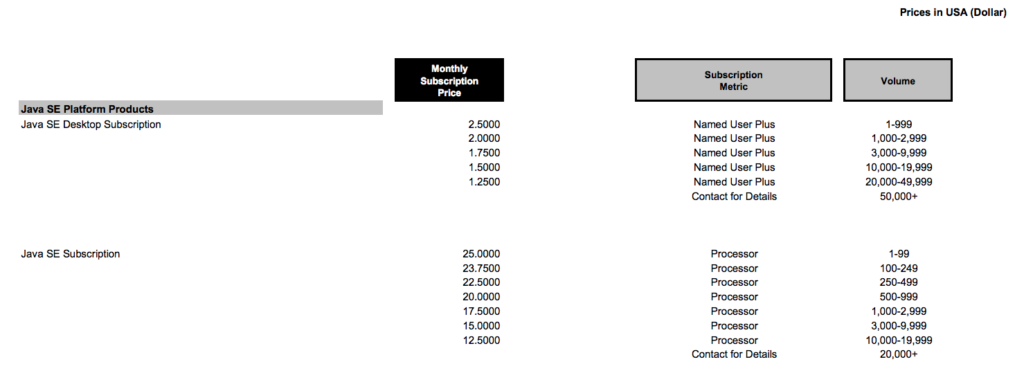Article
How Will the Oracle Java Licensing Changes Affect You?

Earlier this year, Oracle announced that beginning January 1, 2019, it will no longer provide support and updates to Java SE 8.
Instead, the support and updates that have been included as part of the Java license will now be available only through a separate subscription support service. As we are now well into the final quarter of 2018, here are key pieces of information that will help you and your customers plan for this change.
What are the Oracle Java licensing changes?
Due to the Oracle Java license cost changes, companies will need to collect and identify every application that is running Java SE 8 and above before the beginning of 2019. Doing so will ensure an accurate forecast of costs and potential non-compliance risk for future software audits in upcoming years.
Implications of the JAVA SE licensing changes?
FOR CONSUMERS
For applications that you are running, which, in turn, are running on Java SE 8+, Oracle will no longer be providing free updates for SE 8+ beyond January 1, 2019. We recommend that you contact your application provider for details on how they plan to continue to provide application support to you. If you are acting on behalf of an enterprise consumer, Oracle recommends you review the roadmap information for Java SE 8 and beyond and begin to assess your ongoing Java support requirements in order to migrate to a later release, obtain a Java SE support subscription as appropriate, or discuss with your application provider the option of replacing Java with a new open source or subscription-based language.
FOR ENTERPRISE CONSUMERS AND DEVELOPERS
For both developers and consumers, careful consideration should be given to utilizing Open JDK or some other alternative to Java SE 8+. There are pluses and minuses to alternative open source and proprietary development platforms, so make sure that you weigh all of the different factors that impact the particular applications you’re developing/using, as well as the distribution models related to those applications.
What are the additional costs?
Oracle has released the following pricing structure for its SE Subscription:

(View full-size image here)
What should you do now?
In light of Oracle’s recent announcement, companies should begin:
- Anticipating the situation. (You’re ahead of the curve since you’re reading this!)
- Determining how many Java installations you have, where, and why.
- Determining embedded usages.
- Discussing whether you can replace Java with another technology.
- Using the above numbers, calculating what the cost will be in January 2019.
Failure to take the appropriate steps in preparing for the January 2019 deadline could subject your code and applications to significant security risks and maintainability issues. So, don’t delay. Start making preparations now.








